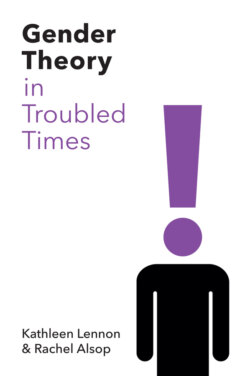Читать книгу Gender Theory in Troubled Times - Rachel Alsop - Страница 21
Male and female brains
ОглавлениеThe second dominant strand of research into the biological basis of supposed cognitive and behavioural differences between men and women centres around the notion of ‘male’ and ‘female’ brains. Such research can overlap with that of evolutionary psychology, given the latter’s emphasis on the mechanisms by which behavioural dispositions are hardwired into us. But not all of those who argue for sexually differentiated brains do so on the basis that such differences are adaptive. The hunt to discover sex differences in the brains of men and women (and between white men and those of supposed ‘other races’) began early in the nineteenth century, when such supposed differences were linked to psychological characteristics such as intelligence, maturity, rationality, sensuality, childlike natures, and so on. Most of these claims died a death earlier last century (Harding 1993). There has, however, been a recent revival in the claim that there is a difference between ‘male’ and ‘female’ brains. They are commonly linked to theories about the effect on brain formation of the exposure to differing amounts of testosterone in the womb (Fine 2017). Central here has been the work of Simon Baron-Cohen. In The Essential Difference he argues that male brains are suited to systematization and female brains to empathy and understanding others, popularized, as Cameron (2007: 104) points out, as ‘men’s brains are built for action and women’s for talking.’ Higher amounts of testosterone are supposed to produce brains less suited to communication and emotional sensitivity and more suited to maths and logic. Studies from brain-damaged people suggest that (for right-handed people) the left side of the brain is utilized for verbal activities and the right for spatial skills and non-verbal processing. The claim is that male and female brains differ because testosterone results in a ‘more cramped left hemisphere’, the hemisphere associated with linguistic competence, which in women is supposed to be greater (ibid.: 103). This leaves a larger right hemisphere for systematizing. This, it is claimed, has been found in rats and some birds. There are many problems with even this one strand of the theory. Firstly, even in rats the link between the hormone, changes in the brain and then behaviour are difficult to chart. Secondly, the mapping from rats to humans is not established. Thirdly, a recent ‘neuro-imaging study of twenty four newborns … found no evidence of a relatively smaller hemisphere in males’ (Fine 2012: 106). Rebecca Jordan-Young (2010), who has spent the last thirteen years examining the studies on brain differences, suggests that many of the conclusions are riddled with inconsistencies – ‘a hodge-podge of tiny samples, inadequate controls, conflicting data and extravagant conclusions’ (Rose and Rose 2011). More recently, Gina Rippon has suggested that
Several things went wrong in the early days of sex differences and brain imaging research. With respect to sex differences, there was a frustrating backward focus on historical beliefs in stereotypes … Studies were designed based on the go-to list of the ‘robust’ differences between females and males, generated over the centuries, or the data were interpreted in terms of stereotypical female/male characteristics … One major breakthrough in recent years has been the realization that, even in adulthood, our brains are continually being changed, not just by the education we receive, but also by the jobs we do, the hobbies we have, the sports we play. … If, for example, being male means that you have much greater experience of constructing things or manipulating complex 3D representations (such as playing with Lego), it is very likely that this will be shown in your brain. Brains reflect the lives they have lived, not just the sex of their owners. … With input from exciting breakthroughs in neuroscience, the neat, binary distinctiveness of these labels is being challenged – we are coming to realize that nature is inextricably entangled with nurture. What used to be thought fixed and inevitable is being shown to be plastic and flexible; the powerful biology-changing effects of our physical and our social worlds are being revealed. (Rippon 2019)
Rippon’s work on brain differences echoes approaches adopted by many contemporary biologists. Ruth Bleier encourages us ‘to view biology as potential, as capacity … Biology itself … develops in interaction with and response to … our environment’ (1984: 52). The plasticity of the brain means not only that it is reorganized in response to stimuli but also that the same function can be taken over by different parts of it. Anne Fausto-Sterling points out that ‘organisms – human and otherwise – are active processes … material anatomic connections in the brain respond to external influences … environment and body co-produce behavior and … it is inappropriate to try to make one component prior to the other’ (2000: 241). The picture which such biologists are offering us is not one in which biology is irrelevant to how we behave but one in which it is itself open to modification and development. It is not a picture in which pre-given male and female patterns of response are hardwired into brains in a way that was selectively adaptive in our prehistory.
